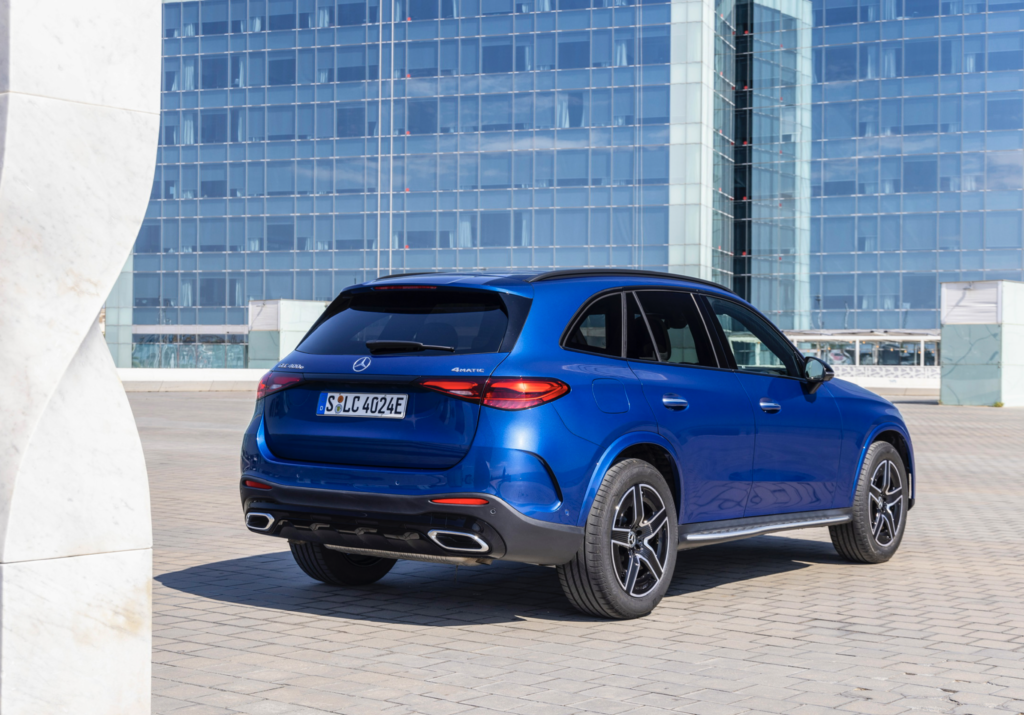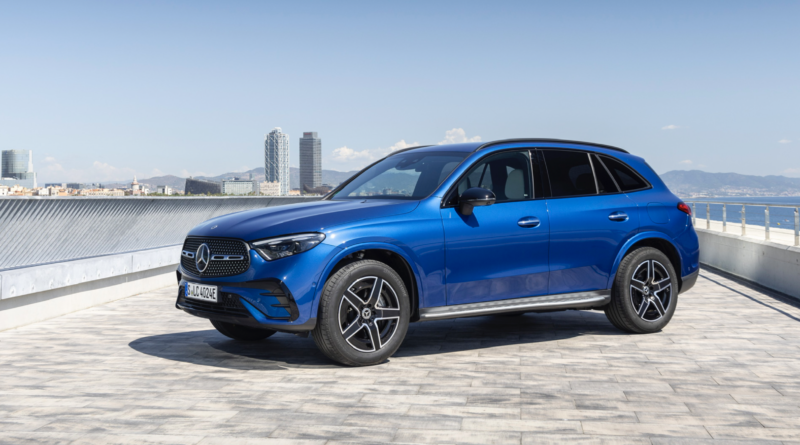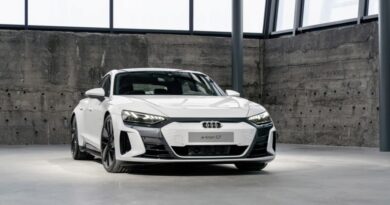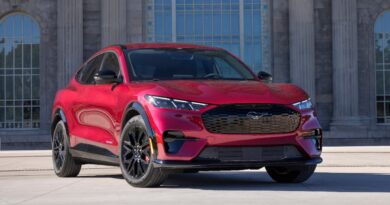Mercedes-Benz GLC to ditch plug-in hybrid tech for Australia, EVs the focus
Mercedes-Benz Australia is hitting the brakes on PHEV – plug-in hybrid electric vehicle – sales. There’s an all-new model of the big-selling GLC on the way, but this time the medium-size SUV line-up won’t include a PHEV version for Australia.
“There will be no plug-in hybrid GLCs,” said Mercedes-Benz Australia spokesman Jerry Stamoulis at the vehicle’s international media intro in Spain.
Earlier this year the C-Class PHEV was dropped with the launch of the all-new model.
The second-generation GLC is due to go on sale here from March next year, beginning with the hybrid 300 version.
Stamoulis said Mercedes-Benz Australia planned to make the transition from internal-combustion powered vehicles, including non-plug-in hybrids, to EVs without using PHEVs as a stepping stone. The decision reflects weak demand for PHEVs in Australia.
“Over the past two years, we have seen a shift in how Mercedes-Benz customers in Australia approach electrification,” he said.
“Our customers’ buying habits have moved away from plug-in hybrid and they are now predominantly looking at either an ICE (internal-combustion engine) vehicle or pure EV.”
Stamoulis added that Mercedes-Benz Australia would have five EVs (EQA, EQB, EQC, EQE and EQS) on sale by the end of this year, and cannot get enough of them to meet current demand.
But Mercedes-Benz PHEVs will not disappear completely. Not right away, at least. But it seems likely they will not be included when new-generation models are introduced in Australia.
“At this stage, we offer A250e hatch, GLC300e and E300e, and we have made the local decision to not offer both the new GLC and C-Class plug-in hybrid models for the Australian market,” Stamoulis said.
The no-PHEV policy could change, he added, though Australia’s growing appetite for EVs makes this unlikely.
“A significant government incentive or boost in local charging infrastructure may make us revaluate our plans, but we are confident our future EV product portfolio will be strong enough to continue the current momentum.”
In Europe, PHEV versions of the new GLC are being pushed as an alternative to EVs for buyers looking to dramatically reduce their fossil fuel consumption while avoiding the worry of recharging on longer journeys.

The new GLC300e and GLC400e PHEVs have a much longer electric-only range than before. Larger battery packs mean they’re good for 100km-plus of real-world driving using only battery power.
This obviously won’t be the case in Australia. But the Mercedes EV that’s based on the departing GLC, the Mercedes-Benz EQC, isn’t about to disappear. It will remain in production until 2024, according to senior executives.
And that’s when the first EVs built on Mercedes-Benz’s new MMA architecture are due to arrive, and it’s likely the replacement for the current EQC will be the first.
MMA – standing for Mercedes Modular Architecture – is an “electric-first” platform, unlike the electric-only EVA2 platform that’s the basis for the large EQE and EQS sedans and SUVs.
While MMA will be able to accommodate ICE-based hybrid drivetrains as well as pure battery power, it’s being engineered with EV applications more in mind. It will serve as a foundation for all mainstream Mercedes-Benz models from the medium-size C-Class down from 2024 onwards.





That is a real pity because I for one want a PHEV so I can get around town on pure EV but not have to have ‘another’ car for long trips, which I do a lot. I was looking forward to upgrading my GLC 250 to a PHEV in the new model, now I will have to look at other manufacturers.
I was going to order GLC400e PHEV (increased range 100km) until the said announcement – but I only represent that 0.01% of the 10% EV market in AU. At 40km previous PHEV range and paying that premium for “EV”, it’s a gimmick (no prize for guessing why a failure – dead on production vs DOA). Until pure EV technology improves further (a must for KM range, especially in AU – even in UK/EU – this is why Tesla (USA) has a good sensible KM range), HPEV fills the gap. But Mercedes AU is prudent: customers need to BUY both ICE + EV instead of ONE PHEV (a reversal meaning of “getting two for the price of one”). Moreover, making a RH drive car is always more expensive vs LH albeit many northern continents cars are much cheaper to buy/own/run ! . You can fill up a petrol tank within 5mins anywhere which gets you another 600km, but currently, 5mins of charging will get you nowhere (only if your are lucky to find a “working” fast charge – 30min charge – and without having a long queue for others to top up @ 30min ie school holidays road trip). Even UK/EU owners of EV are having this conundrum, and their cities/townships are NOT that far apart per cities in AU.